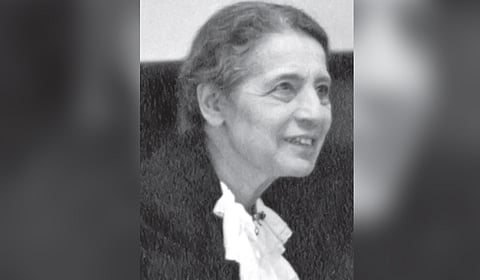

LISE MEITNER
Born on November 7, 1968, Lise Meitner was an Austrian-born physicist who made significant contributions to the field of nuclear physics. She is best known for her collaboration with Otto Hahn in the discovery of nuclear fission, which was a pivotal breakthrough in understanding the structure of the atom and the development of nuclear energy.
Meitner was born in Vienna, and had demonstrated an early inclination towards mathematics and science. Despite facing barriers to higher education as a woman, she pursued her higher studies in physics at the University of Vienna and later at the University of Berlin, where she became the second woman to receive a doctoral degree in physics. In the 1930s, Meitner in collaboration with Hahn at the Kaiser Wilhelm Institute in Berlin worked on experiments involving the bombardment of uranium with neutrons. Their joint effort led to the discovery of the nuclear fission in 1938. However, owing to the mere fact that she was a woman, Meitner’s contributions to this discovery was not fully recognised at the time, and Hahn alone was awarded the Nobel Prize in Chemistry in 1944 for the discovery, which later erupted controversy.
Her role in the discovery of nuclear fission has since been widely acknowledged, and she is celebrated for her pioneering work in nuclear physics. Fleeing Nazi Germany in 1938 due to her Jewish heritage, she continued her research in Sweden. It is here that she became the first female professor of physics at the University of Stockholm.
Throughout her career, Meitner made significant contributions to the study of radioactive decay, beta radiation, and nuclear reactions. Her work laid the foundation for the development of nuclear reactors and atomic bombs, but she is also remembered for her ethical stance against the use of nuclear weapons and her efforts to promote peaceful applications of nuclear energy. On the other hand, she was also a prominent advocate for women in science and was an influential figure in the scientific community until her death in 1968. Though facing a lot of unfairness because of her gender, today she is remembered as one of the most important physicists of the 20th century and a trailblazer for women in STEM fields.